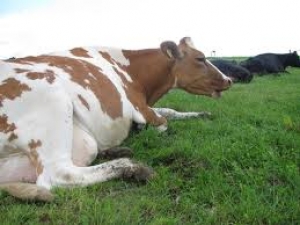Technical Support

Outbreaks of FMD in Mongolia affect domestic sheep, goats, camels, and cattle as well as Mongolian gazelles. In a country where roughly one-third of the human population relies directly on livestock production for their subsistence, outbreaks of FMD cause severe disruption of the rural economy.
The study, titled "Serosurveillance for Foot-and-Mouth Disease in Mongolian Gazelles (Procapra gutturosa) and Livestock on the Eastern Steppe of Mongolia," appears in the January edition of the Journal of Wildlife Diseases.
The authors include: Sanjaa Bolortsetseg, Shiilegdamba Enkhtuvshin, Wendy Weisman, Amanda Fine, Angela Yang, and Damien Joly of the Wildlife Conservation Society; and D. Nyamsuren of the Dornod Aimag Veterinary Laboratory, Choibalsan, Dornod Province, Mongolia.
The Mongolian gazelle is a medium-sized antelope with a heart-shaped patch of white fur on its rump. The species gathers in vast migratory herds across Mongolia's Eastern Steppe, considered the largest intact temperate grassland in the world. The gazelle is under pressure from a variety of threats, particularly exploration for oil, gas, and minerals.
The research culminates a decade-long effort to examine the potential role of the gazelles in FMD ecology. In the recently published study (undertaken between 2005-2008), the research team collected blood samples from 36 gazelle calves and 57 adult gazelles in order to determine the prevalence of antibodies to the foot-and-mouth virus (FMDV). The team also collected samples from domestic animals kept in areas frequented by gazelles, including 138 sheep, 140 goats, 139 Bactrian camels, and 138 cattle for comparison.
The authors found that the patterns of FMDV antibody prevalence in gazelle populations reflect the dynamics of FMD in livestock across the Eastern Steppe of Mongolia. During 1998-99 (outbreak free years in livestock), researchers detected no antibodies in gazelles; conversely, during a FMD outbreak in livestock in 2001, researchers detected a 67 per cent prevalence rate in gazelles.
The recently published study examines the following outbreak free periods, during which the team noted a declining prevalence in FMDV antibodies in the gazelle population. Based on these observations, the authors conclude that the Mongolian gazelle population is not a reservoir for FMDV on the Eastern Steppe of Mongolia, but rather, the virus enters the gazelle population after spillover from livestock during sporadic outbreaks.
"The successful control of foot-and-mouth disease on the Eastern Steppe will require a programme that focuses on livestock populations and entails health monitoring and vaccinations of domestic animals when needed," said WCS veterinary epidemiologist and co-author Shiilegdamba Enkhtuvshin.
TheCattleSite News Desk























